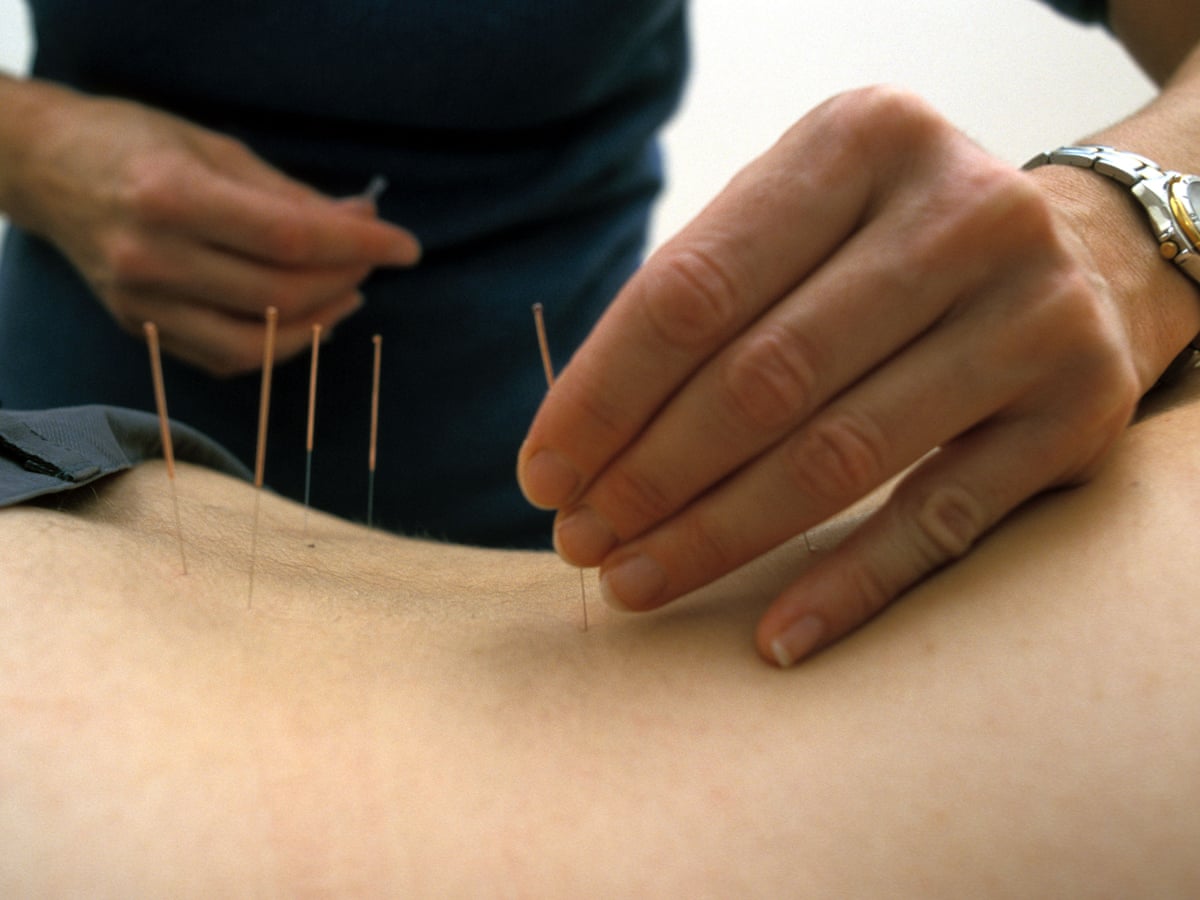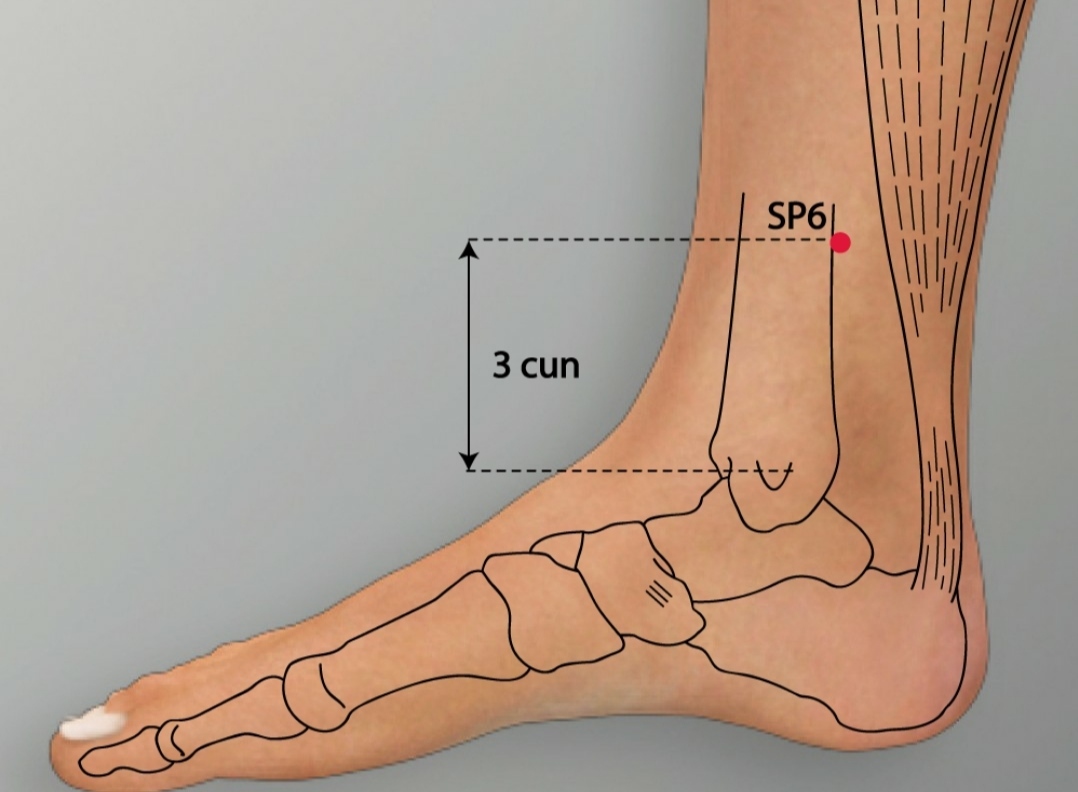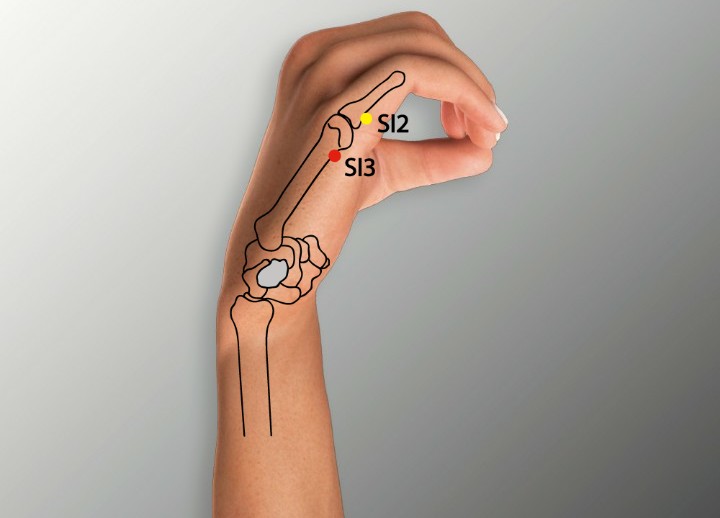Sacroiliac Joint Pain and Acupuncture Treatment
Sacroiliac joint (SIJ) pain is a common yet often misunderstood condition that affects the lower back and pelvis, causing discomfort, stiffness, and reduced mobility. The sacroiliac joints connect the sacrum (the triangular bone at the base of the spine) to the iliac bones of the pelvis, playing a critical role in stabilizing the body and absorbing shock during movement. When these joints become inflamed, irritated, or dysfunctional, it can lead to significant pain and discomfort, impacting daily activities and quality of life.
While conventional treatments like physical therapy, medications, or injections are commonly used to manage SIJ pain, many individuals are turning to alternative therapies like acupuncture for natural, non-invasive relief. Acupuncture, a cornerstone of Traditional Oriental Medicine (TOM), involves the insertion of thin needles into specific points on the body to restore balance and promote healing. In this comprehensive guide, we will explore the causes and symptoms of sacroiliac joint pain, the principles of acupuncture, its effectiveness for SIJ pain, key acupoints used in treatment, and practical tips for incorporating acupuncture into your wellness routine.
Understanding Sacroiliac Joint Pain: Causes and Symptoms
Maybe You Need:
What is Sacroiliac Joint Pain?
Sacroiliac joint pain arises from dysfunction or inflammation in one or both sacroiliac joints. These joints are designed to provide stability while allowing limited movement, but excessive or restricted motion can lead to pain. SIJ pain is often felt in the lower back, buttocks, or upper thighs and may be mistaken for other conditions like sciatica or lumbar disc issues. The condition can range from mild discomfort to severe, debilitating pain that affects mobility and quality of life.
Common Causes of Sacroiliac Joint Pain
SIJ pain can be triggered by a variety of factors, including:
- Injury or Trauma: Falls, car accidents, or sports injuries can strain or damage the ligaments supporting the sacroiliac joints, leading to pain.
- Pregnancy: Hormonal changes during pregnancy, particularly the release of relaxin, can loosen the ligaments around the SIJ, causing instability and pain.
- Arthritis: Conditions like osteoarthritis or ankylosing spondylitis can cause inflammation and degeneration in the sacroiliac joints.
- Repetitive Stress: Activities involving repetitive twisting, lifting, or prolonged sitting can irritate the SIJ and lead to pain.
- Leg Length Discrepancy: Uneven leg lengths can alter pelvic alignment, placing stress on the sacroiliac joints.
- Poor Posture or Biomechanics: Improper posture, weak core muscles, or abnormal gait can contribute to SIJ dysfunction.
- Infections or Other Conditions: Rarely, infections or systemic inflammatory conditions can affect the sacroiliac joints.
Symptoms of Sacroiliac Joint Pain
SIJ pain can present in various ways, depending on the underlying cause and severity. Common symptoms include:
- Pain in the lower back, buttocks, or hips, often on one side
- Stiffness or reduced range of motion in the pelvis
- Pain that worsens with prolonged sitting, standing, or walking
- Discomfort when transitioning from sitting to standing
- Radiating pain into the upper thighs or groin
- Tenderness over the sacroiliac joint when pressed
- Difficulty climbing stairs or performing weight-bearing activities
Chronic SIJ pain can lead to compensatory issues, such as muscle imbalances or increased stress on other joints, further complicating recovery.

What is Acupuncture?
Acupuncture is an ancient healing practice rooted in Traditional Oriental Medicine, dating back over 2,500 years. It involves inserting thin, sterile needles into specific points on the body, known as acupoints, to stimulate the flow of the body’s vital energy. According to TOM, disruptions in energy flow along pathways called meridians can lead to health imbalances, including pain and inflammation. Acupuncture aims to restore balance, reduce pain, and promote the body’s natural healing processes.
Modern research suggests that acupuncture may work by stimulating the nervous system, releasing endorphins (natural painkillers), and improving blood circulation. For sacroiliac joint pain, acupuncture can target local and distal acupoints to reduce inflammation, relax tight muscles, and alleviate discomfort.
How Acupuncture Works for Sacroiliac Joint Pain
In TOM, SIJ pain is often attributed to blockages or imbalances in the flow of Energy and blood, particularly in the Bladder, Gallbladder, or Kidney meridians, which are closely associated with the lower back and pelvis. Acupuncture addresses these imbalances by:
- Reducing Inflammation: Acupuncture may decrease inflammation in the sacroiliac joints by modulating the immune response and promoting blood flow.
- Relieving Muscle Tension: Tight muscles in the lower back, hips, or buttocks can exacerbate SIJ pain. Acupuncture helps relax these muscles, improving mobility.
- Alleviating Pain: By stimulating the release of endorphins and other neurotransmitters, acupuncture can reduce pain perception.
- Restoring Balance: Acupuncture targets both local (near the SIJ) and distal (farther from the pain site) acupoints to address underlying imbalances contributing to SIJ dysfunction.

The Effectiveness of Acupuncture for Sacroiliac Joint Pain
While research on acupuncture specifically for sacroiliac joint pain is limited, studies on acupuncture for lower back pain and pelvic pain provide promising insights. Since SIJ pain is closely related to lower back pain, the evidence supporting acupuncture for back pain is highly relevant.
Scientific Evidence
- Lower Back Pain: A 2013 meta-analysis published in the Journal of Pain found that acupuncture was more effective than no treatment or sham acupuncture for chronic lower back pain, with significant improvements in pain intensity and function. Since SIJ pain often manifests as lower back pain, these findings suggest potential benefits for SIJ dysfunction.
- Pelvic Pain: A 2018 study in the Journal of Acupuncture and Meridian Studies showed that acupuncture reduced pain and improved mobility in patients with pelvic girdle pain, a condition closely related to SIJ dysfunction, particularly in pregnant women.
- Inflammation and Pain Modulation: Research indicates that acupuncture may reduce pro-inflammatory cytokines and increase pain-relieving neurotransmitters, which can help alleviate SIJ pain caused by inflammation or muscle tension.
Patient Experiences
Many patients with SIJ pain report significant relief after acupuncture treatments. Common outcomes include reduced pain, improved range of motion, and enhanced overall well-being. Acupuncture is often praised for its holistic approach, addressing both physical symptoms and related stress or fatigue. While individual results vary, acupuncture is generally well-tolerated, with minimal side effects when performed by a licensed practitioner.

Key Acupoints for Treating Sacroiliac Joint Pain
Acupuncture treatments for SIJ pain target specific acupoints to relieve pain, reduce inflammation, and restore balance. Below are some of the most commonly used acupoints for SIJ pain, along with their locations and benefits.
- BL23 (Shenshu) – Kidney Shu
- Location: On the lower back, about 1.5 inches lateral to the spine, at the level of the second lumbar vertebra (just above the waist).
- Benefits: BL23 is a key point for strengthening the lower back and kidneys, reducing SIJ pain, and improving pelvic stability. It is particularly effective for chronic pain and stiffness.
- TOM Perspective: Located on the Bladder meridian, BL23 tonifies Kidney Energy and supports the lower back and pelvis.

- BL25 (Dachangshu) – Large Intestine Shu
- Location: On the lower back, about 1.5 inches lateral to the spine, at the level of the fourth lumbar vertebra (near the top of the sacrum).
- Benefits: BL25 relieves pain and stiffness in the lower back and sacroiliac region. It is often used for SIJ pain caused by inflammation or muscle tension.
- TOM Perspective: This point on the Bladder meridian helps clear blockages and promote Energy flow in the lower back.

- BL32 (Ciliao) – Second Bone Hole
- Location: On the sacrum, in the second sacral foramen (small indentation), about midway between the spine and the outer edge of the sacrum.
- Benefits: BL32 is highly effective for SIJ pain, pelvic pain, and lower back stiffness. It helps relax tight muscles and improve circulation in the pelvic region.
- TOM Perspective: Located on the Bladder meridian, BL32 regulates Energy and blood in the sacroiliac area.

- GB30 (Huantiao) – Jumping Circle
- Location: On the buttocks, about one-third of the distance from the hip joint to the sacrum, in a depression when the hip is flexed.
- Benefits: GB30 is a powerful point for relieving hip, buttock, and SIJ pain. It also helps relax the gluteal muscles, which can contribute to SIJ dysfunction.
- TOM Perspective: Located on the Gallbladder meridian, GB30 dispels wind-damp and alleviates pain in the lower body.

- BL40 (Weizhong) – Middle of the Crook
- Location: At the midpoint of the crease behind the knee.
- Benefits: BL40 is a distal point that helps relieve lower back and SIJ pain by promoting circulation and reducing muscle tension in the lower body.
- TOM Perspective: This point on the Bladder meridian clears heat and resolves dampness, which can contribute to pain and stiffness.

- SP6 (Sanyinjiao) – Three Yin Intersection
- Location: On the inner leg, about four finger-widths above the ankle bone, just behind the shinbone.
- Benefits: SP6 supports pelvic health, reduces inflammation, and alleviates pain in the lower back and hips. It is particularly useful for SIJ pain related to pregnancy or hormonal imbalances.
- TOM Perspective: Located on the Spleen meridian, SP6 nourishes Yin and regulates Energy in the lower body.

- SI3 (Houxi) – Back Stream
- Location: On the outer edge of the hand, just below the base of the fifth finger, in a depression when the fist is clenched.
- Benefits: SI3 is effective for relieving pain and stiffness in the back, neck, and sacroiliac region. It is often used as a distal point to complement local points like BL32.
- TOM Perspective: Located on the Small Intestine meridian, SI3 helps clear blockages and promote Energy flow along the spine.

How Acupoints Are Used in Treatment
During an acupuncture session, the practitioner selects a combination of local (near the SIJ) and distal (farther from the pain site) acupoints based on the patient’s symptoms and TOM diagnosis. Thin needles are inserted into the chosen points and left in place for 15-30 minutes. Additional techniques, such as moxibustion (burning herbs near acupoints) or electro-acupuncture (mild electrical stimulation), may be used to enhance the treatment’s effects.
The Acupuncture Treatment Process for Sacroiliac Joint Pain
What to Expect During a Session
- Consultation: The acupuncturist will conduct a detailed assessment of your symptoms, medical history, and lifestyle. They may ask about the location, duration, and triggers of your SIJ pain.
- TOM Diagnosis: The practitioner will evaluate your pulse, tongue, and other signs to determine the underlying cause of your pain (e.g., Energy stagnation, blood stasis, or Kidney deficiency).
- Needle Insertion: Sterile, single-use needles are inserted into the selected acupoints. Most patients feel minimal discomfort, often describing a slight tingling, warmth, or heaviness at the insertion site.
- Relaxation: You will rest for 15-30 minutes while the needles remain in place. The practitioner may adjust the needles or apply complementary therapies like moxibustion.
- Post-Treatment: The acupuncturist may recommend stretches, exercises, or dietary changes to support recovery and prevent recurrence.
Frequency and Duration of Treatment
The number of acupuncture sessions needed depends on the severity and chronicity of SIJ pain. Acute cases may require 2-4 sessions over 1-2 weeks, while chronic conditions may need weekly treatments for 6-12 weeks. Maintenance sessions may be recommended to sustain relief and prevent flare-ups.
Benefits of Acupuncture for Sacroiliac Joint Pain
Acupuncture offers several advantages for individuals with SIJ pain:
- Non-Invasive: Acupuncture is a low-risk, non-invasive therapy that avoids the need for surgery or long-term medication use.
- Holistic Approach: By addressing both physical and energetic imbalances, acupuncture targets the root cause of SIJ pain.
- Complementary Therapy: Acupuncture can be used alongside physical therapy, chiropractic care, or medications to enhance pain relief and recovery.
- Improved Mobility and Well-Being: Patients often report reduced pain, increased range of motion, and improved energy levels after acupuncture.

Safety and Considerations
Is Acupuncture Safe?
Acupuncture is generally safe when performed by a licensed practitioner. Side effects are rare but may include mild bruising, soreness, or temporary fatigue. To ensure safety:
- Choose a licensed acupuncturist certified by a recognized organization, such as the National Certification Commission for Acupuncture and Oriental Medicine (NCCAOM).
- Verify that the practitioner uses sterile, single-use needles.
- Inform your acupuncturist of any medical conditions, medications, or pregnancy.
Who Should Avoid Acupuncture?
Certain individuals should consult their doctor before undergoing acupuncture, including those who:
- Are pregnant (some acupoints, like SP6, may stimulate uterine contractions)
- Have bleeding disorders or are taking blood thinners
- Have a pacemaker (electro-acupuncture may interfere with the device)
Complementary Tips for Managing Sacroiliac Joint Pain
In addition to acupuncture, the following strategies can help manage SIJ pain:
- Physical Therapy: Work with a physical therapist to strengthen core and pelvic muscles, improving SIJ stability.
- Stretching and Exercise: Gentle stretches, yoga, or Pilates can improve flexibility and reduce muscle tension.
- Heat or Ice Therapy: Applying heat can relax tight muscles, while ice can reduce inflammation in acute cases.
- Posture Correction: Maintain proper posture during sitting, standing, and walking to reduce stress on the SIJ.
- TOM Dietary Recommendations: In TOM, consuming warm, nourishing foods (e.g., soups, whole grains) and avoiding cold or damp foods (e.g., dairy, fried foods) may support recovery.
Conclusion
Sacroiliac joint pain can significantly impact daily life, but acupuncture offers a natural, effective solution for many individuals. By targeting key acupoints like BL23, BL32, and GB30, acupuncture can reduce inflammation, alleviate pain, and improve mobility. Supported by scientific evidence and centuries of traditional use, acupuncture is a valuable tool for managing both acute and chronic SIJ pain.
If you’re considering acupuncture for sacroiliac joint pain, consult a licensed practitioner to develop a personalized treatment plan. Combined with lifestyle changes and complementary therapies, acupuncture can help you find lasting relief and reclaim your quality of life.
Ready to explore acupuncture for sacroiliac joint pain? Visite Fuji Wellness and take the first step toward natural relief. Share your experiences with our acupuncture or ask questions in the comments below to join the conversation!
Fuji Wellness:
- Address: 132-0031 Matsushima 1-chome, 21-14, Tokyo, Japan
- Chat with us: Click here
- Email: sunnyphamsensei@gmail.com





